Designed by the incredible Dutch architectural firm VenhoevenCS Amsterdam along with their French partner firm Ateliers2/3/4, The Paris Aquatic Centre in Saint-Denis will host most of the water-based events for the Olympic Games in 2024, the only structure being built for the Games. The design of the building was the outcome of an international competition that included multiple entries from across the globe, with VenhoevenCS coming out on top. The design of the Aquatic Centre is intricate, innovative, and eco-friendly, satisfying all the various layers of sustainability, including having a low carbon footprint, reusing materials, and, most importantly, catering to the people of Saint-Denis.
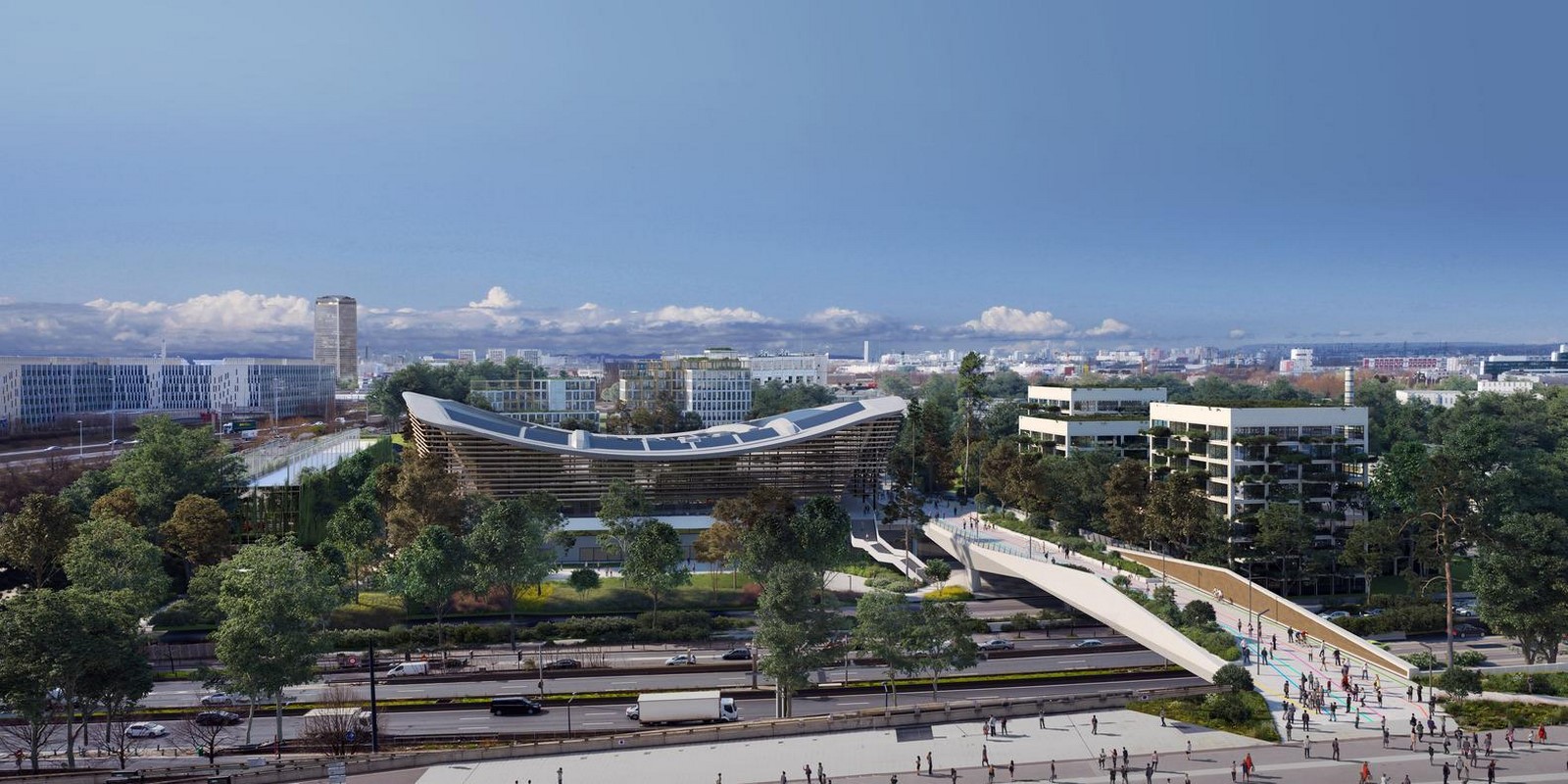
The general program and the key components of the design.
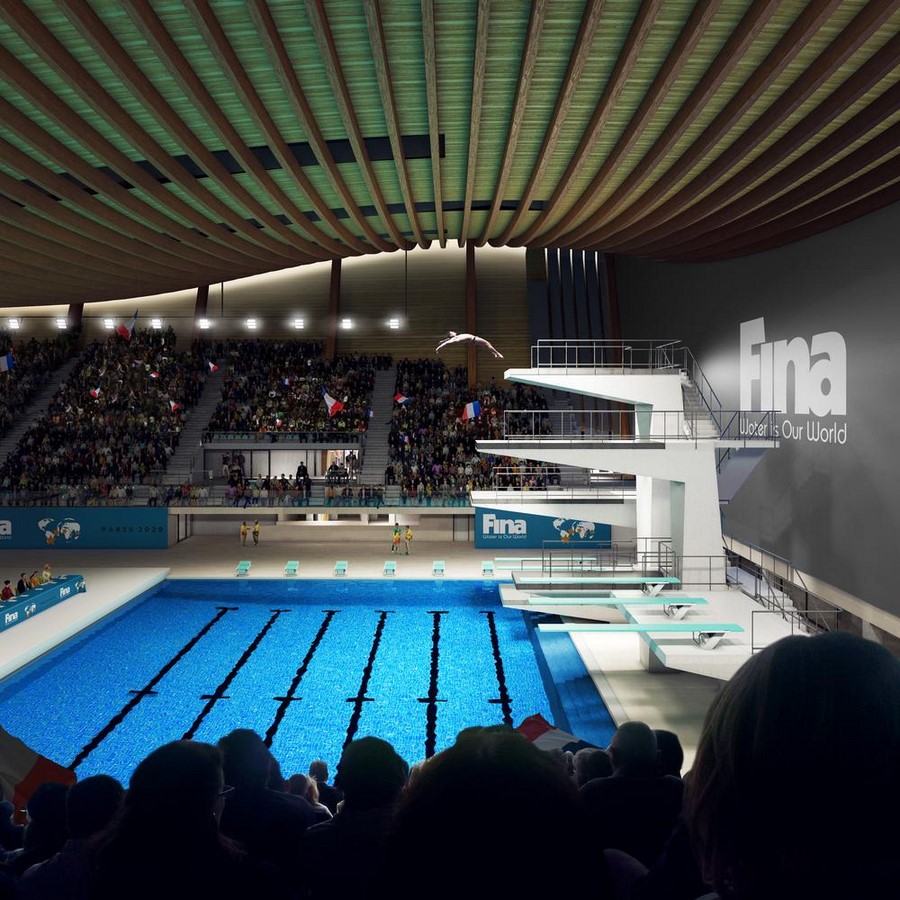
One of the core underlying principles of the design was to create a multifunctional space that can transition itself efficiently during and after the Games. During the Olympic Games, The Paris Aquatic Centre is set to host three major Olympic events: water polo, diving, and synchronised swimming. After the Olympic Games, the Centre will transition into Boccia Stadium as a training centre for the Paralympics. Once the Games are finished, the Centre is set to be a public facility with a fifty-meter pool for the neighbourhood of Saint-Denis to host various sporting events for many years after. Saint-Denis is one of the rougher, more problematic neighbourhoods in Paris. The design thus seeks to be a positive facilitator for the public in uplifting the communities around and providing a platform for promising individuals.
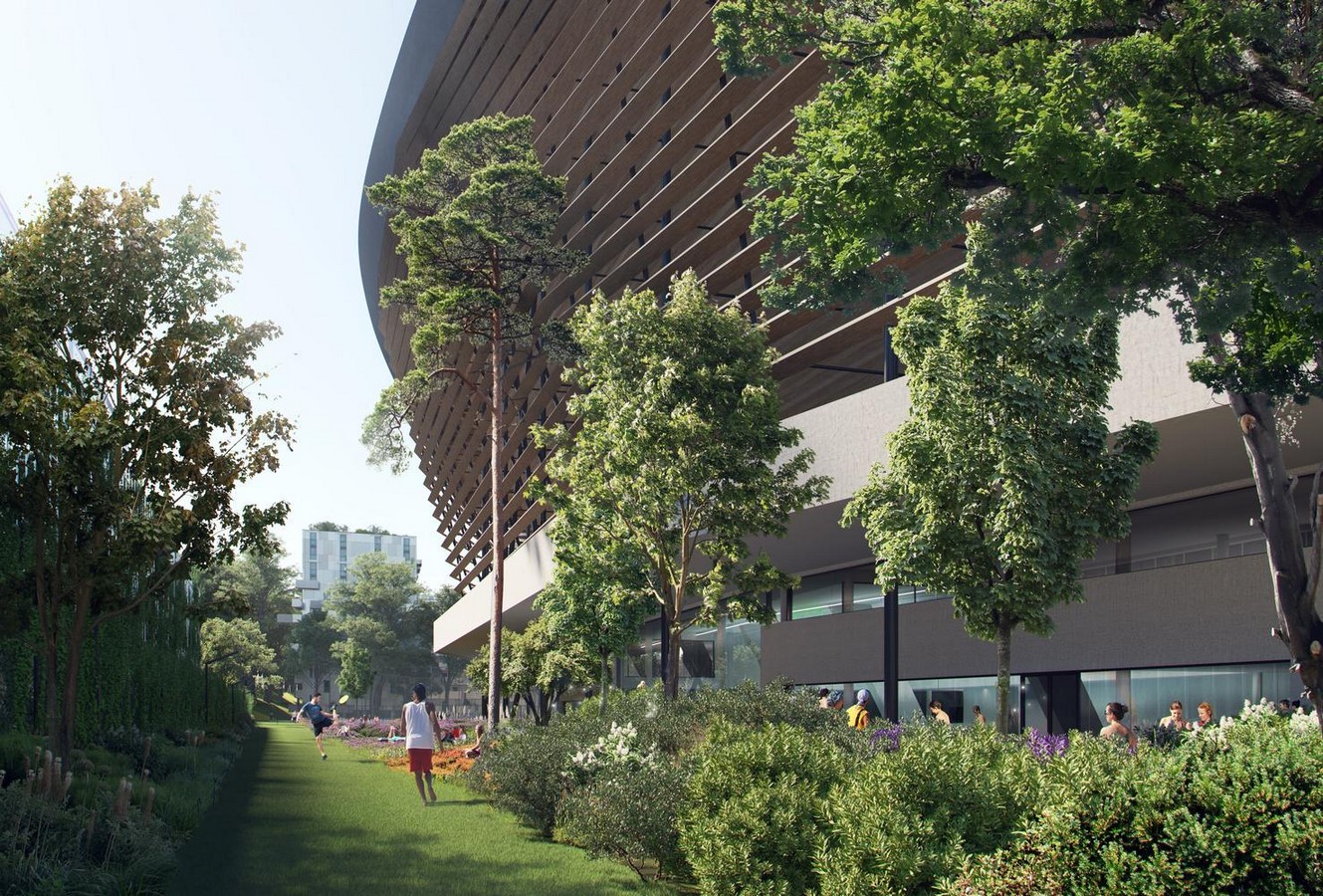
The key components of the design include a landscaped pedestrian bridge that connects the Aquatic Centre to the existing ‘Stade de France’, landscaped area along the periphery that accommodates one hundred trees, a suspended wooden roof system with a louvred wood façade, restaurants, shared spaces, changing rooms, dry training rooms, adequate services, and seating spaces that can host up to five thousand people around a competitive fifty-meter-long pool. The primary inspiration that moulded the design was nature and being in tune with the surrounding context, utilising its full potential. The same inspiration allowed the designers to take the necessary steps to ensure that The Paris Aquatic Centre had an overall low embodied energy.
The significance of using wood and efficient landscaping.
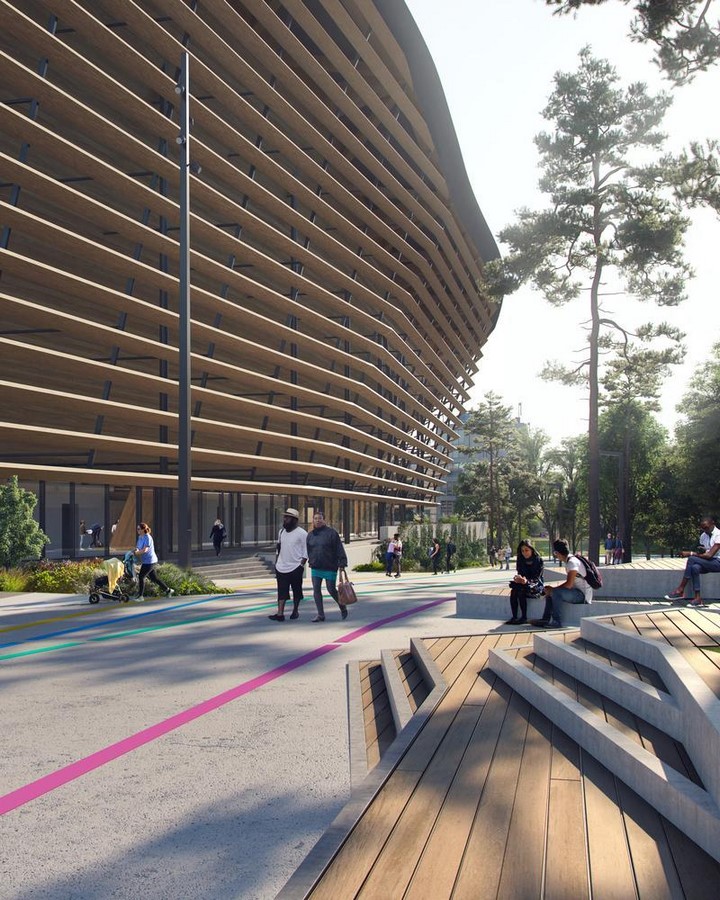
With the idea of creating a new ‘city district’, the design is transparent, inviting landscapes to flow into it. The one hundred trees create a fresh micro-ecosystem that improves air quality and life. This is lined by several community spaces that can host many events during and after the Olympic Games. Wood is the primary essence that defines a good portion of the built form. Locally sourced wood helps reduce carbon emissions as it is a quintessential bio-based construction material. Going beyond just sourcing materials, the design also looks to upcycle waste materials from the surrounding and incorporate that into the building. Most of the furniture in the proposal is made of waste wood from construction and demolition sites. The tribune chairs are also made from reused upcycled plastic from neighbouring Saint-Denis schools, which indirectly doubles up as the communities involved in the design process itself. The highly contextual and sensitive nature of the materiality of The Paris Aquatic Center makes this project truly unique.
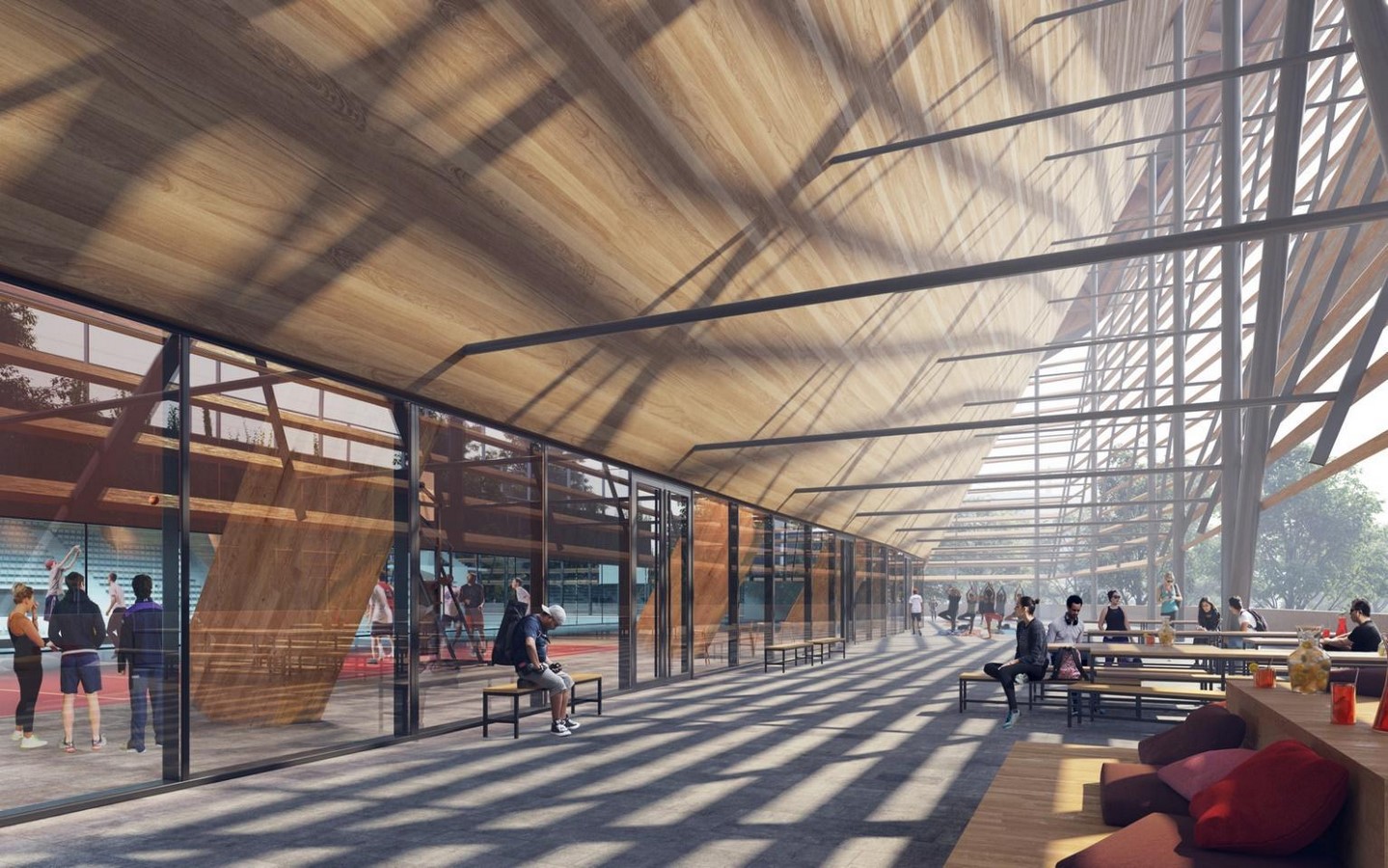
The highly intricate roof design and structure.
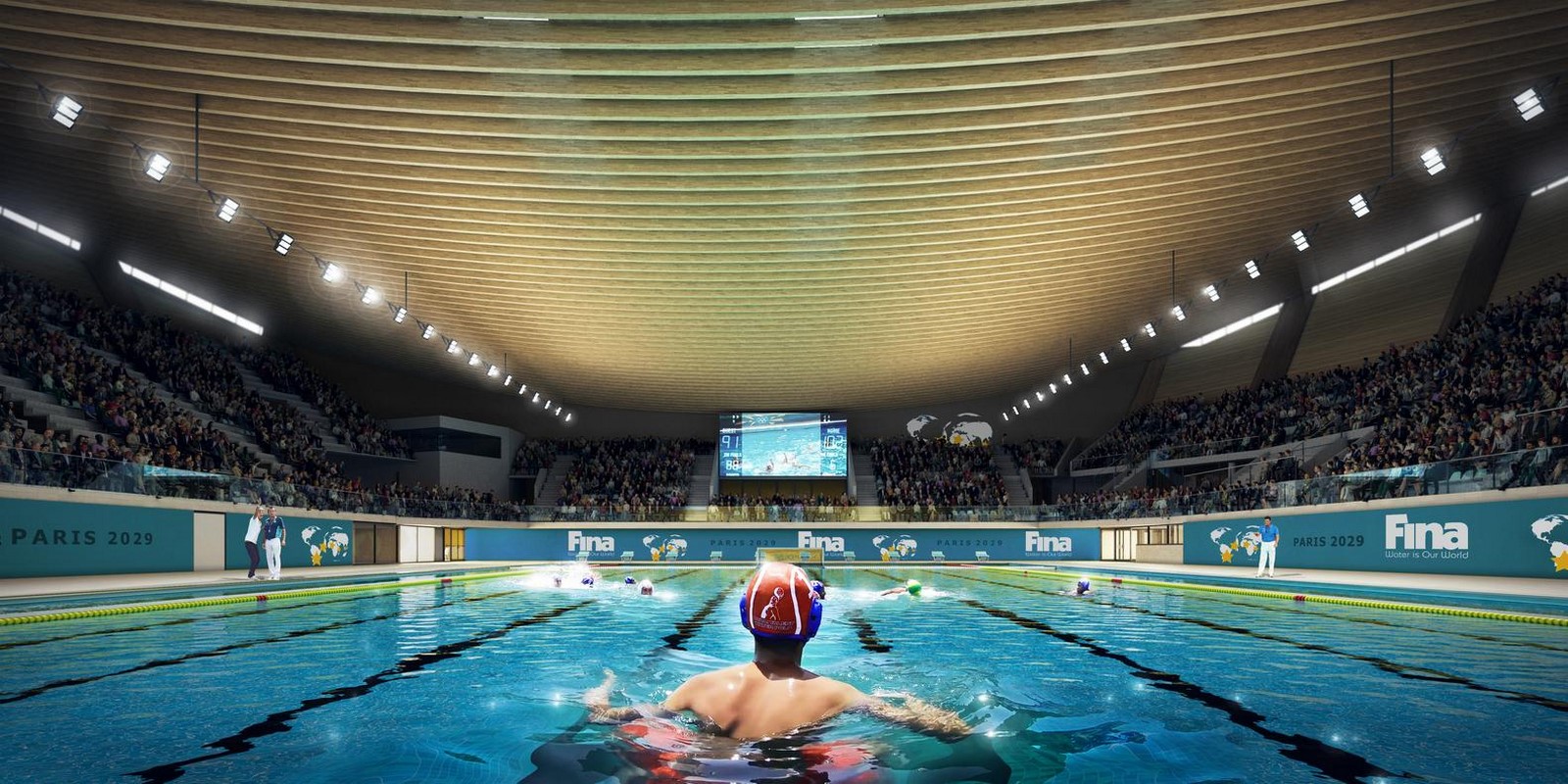
The Paris Aquatic Centre’s roof is arguably its most striking feature. It is a free-spanning 89-metre-long wooden roof structure having a reduced ceiling height with a concave bent suspended shape that strictly adheres to the minimum standards required for the project. This ensures that the dependency on air conditioning inside is reduced drastically for years, making the design highly sustainable. The roof also doubles up as a solar roof covering 25% of the required energy production, and will be one of the largest solar farms in France. Under the roof, the tribunes on three sides support up to five thousand spectators and are a key part of the multifunctional design character of the project. All of the visible structural elements in the design are made of timber and can support significant loads of up to eight thousand tonnes, primarily including the roofing system.
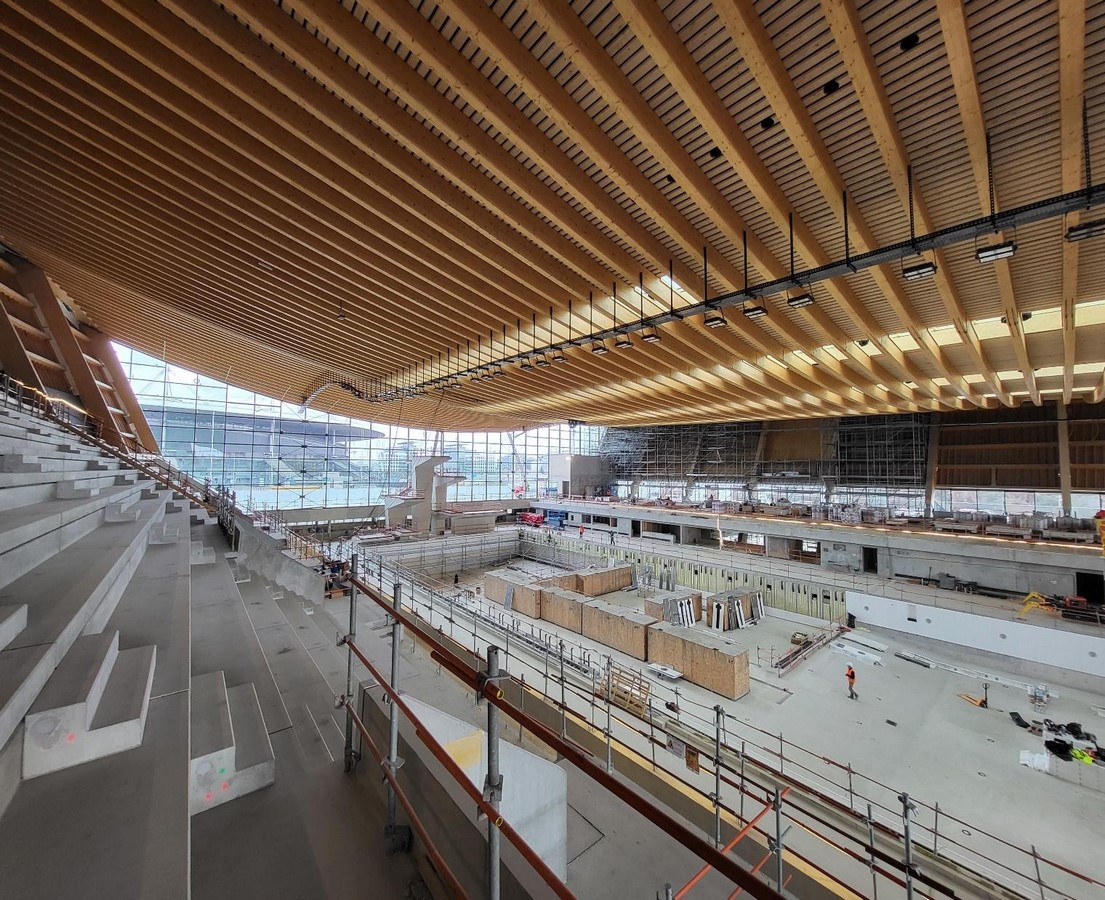
Recycling water and the importance of contextual connections.
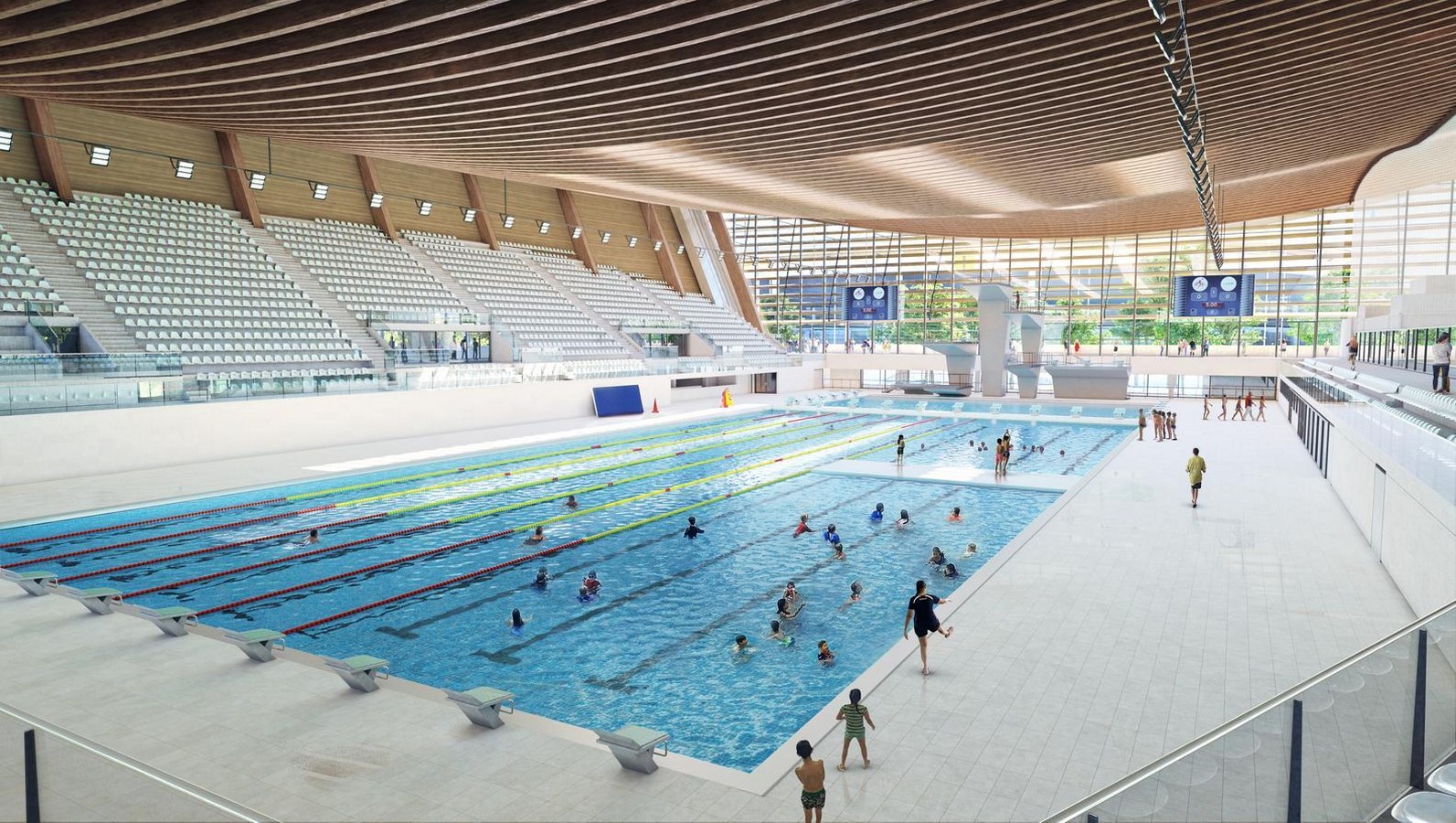
With designing an aquatic centre comes excessive usage of water. With appropriate treatment measures, much water could be well-spent, which benefits the surrounding context. The Paris Aquatic Centre has tacked this problem efficiently, ensuring that water as a key resource element is preserved the most. The proposed water system ensures that 50% of the water from the pool is reused, thereby reducing the need for freshwater and ensuring that the by-product is clean for usage. This system can be very beneficial in the long term as the Centre transitions into a public space.
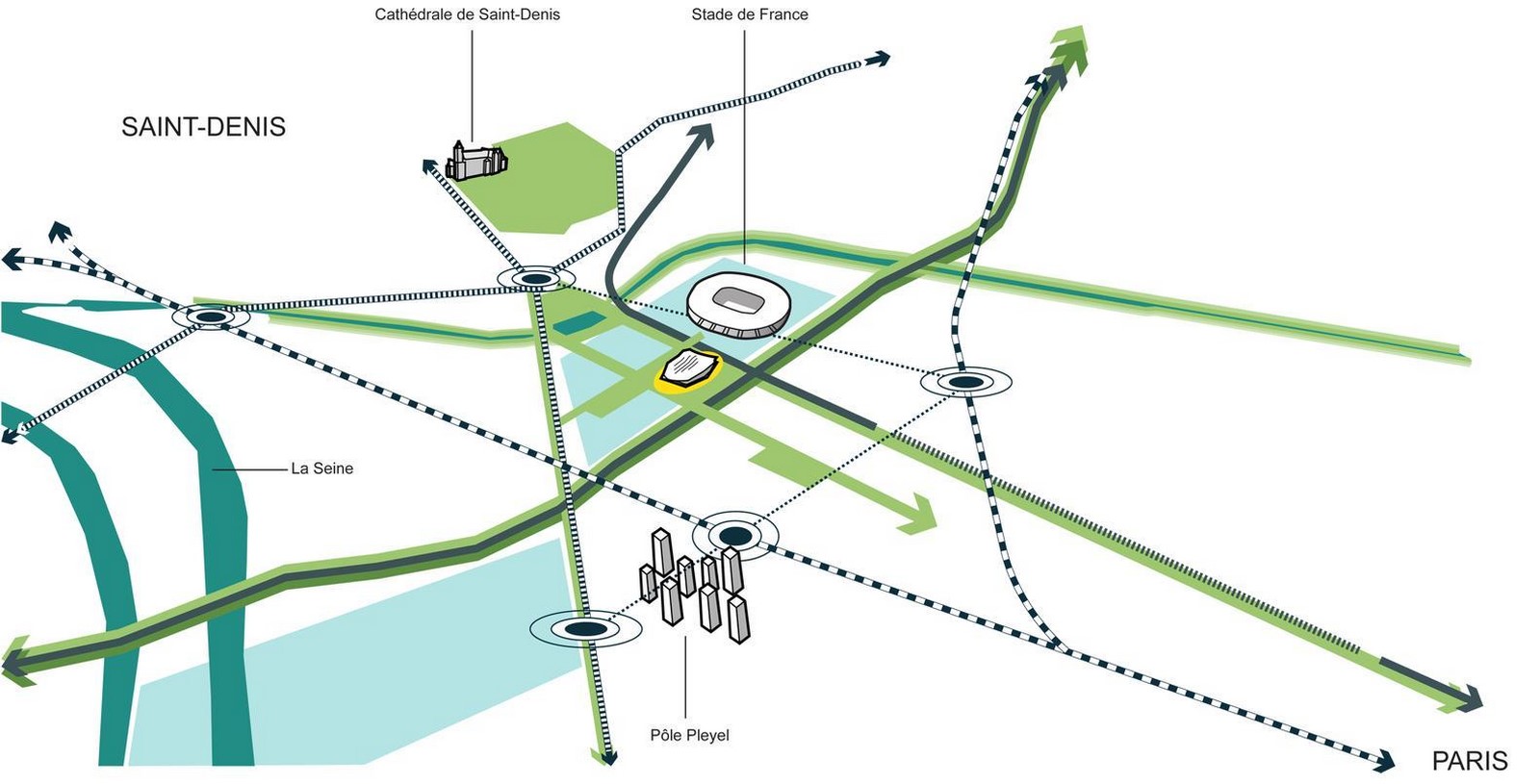
The idea of creating a connection with the city through materiality, openness, and multifunctional transitioning makes The Paris Aquatic Centre a unique project. At the heart of Saint-Denis, the Centre is a facilitator for welcoming people in, thus allowing a good intermixing of cultures and neighbourhoods. While these layers of connection exist, the literal connection is seen through the proposed new pedestrian bridge that crosses the highway and connects to the existing Stade De France. The bridge is proposed to be the heart of the central district created by the Aquatic Centre and its surroundings. The colourful bridge and lined landscapes ensure this liminal space is emphasised appropriately.
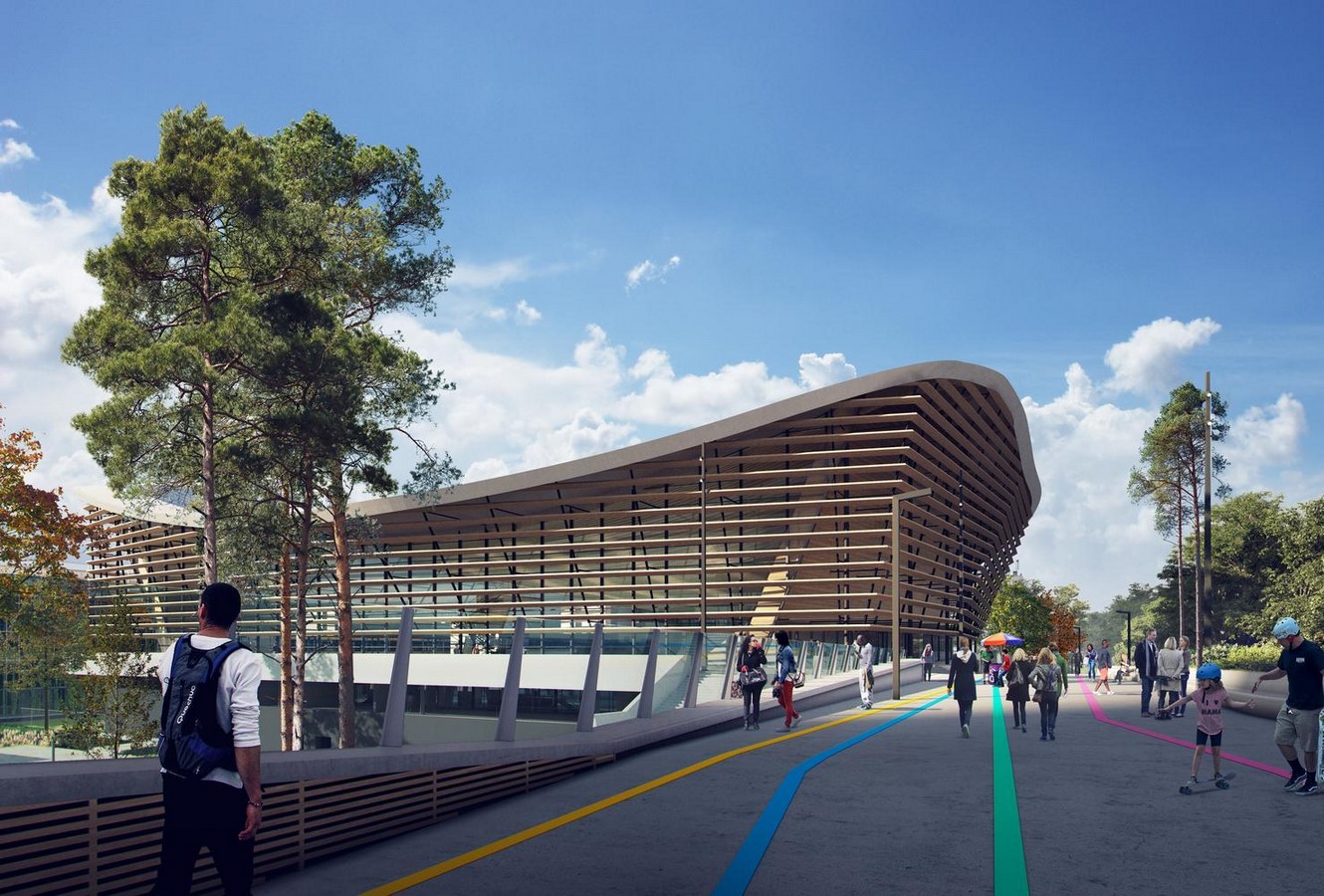
A landmark bigger than just the Olympics.

The idea of sustainability is fully explored in the proposal of The Paris Aquatic Centre. It was not just the materials used or all the other eco-friendly strategies that created the sustainable design, but rather the exploration of how a built form can sustain people and cultures. The positive impact the proposal seeks to have on its context and neighbourhoods through efficient multifunctional transitioning is a concept that makes this project stand out. The Paris Aquatic Centre is thus a balanced ecosystem within itself.
References:
Aquatics Centre paris 2024 (2023) VenhoevenCS architecture+urbanism. Available at: https://venhoevencs.nl/projects/aquatics-centre-paris-2024/ (Accessed: 16 May 2023).
Martijn (2020) Paris 2024; Design Aquatics Centre, Architecture of the Games. Available at: https://architectureofthegames.net/2024-paris/paris-2024-design-aquatics-centre/ (Accessed: 16 May 2023).
Julian (2023) Olympic aquatics centre, Paris 2024, sbp. Available at: https://www.sbp.de/en/project/olympic-aquatics-centre-paris-2024/ (Accessed: 16 May 2023).
Aquatics Centre (2023) Paris 2024. Available at: https://www.paris2024.org/en/venue/aquatics-centre/ (Accessed: 16 May 2023).
Welch, A. (2020) 2024 Paris olympics aquatics centre building – e-architect, e. Available at: https://www.e-architect.com/paris/2024-paris-olympics-aquatics-centre-building (Accessed: 16 May 2023).






















